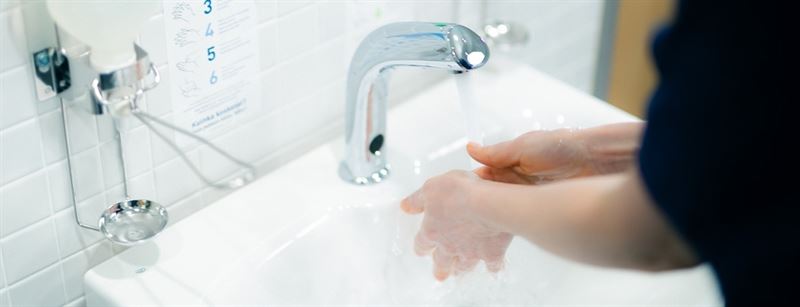WHO's global annual call to action for health workers, international World Hand Hygiene Day on 5 May, calls on everyone to be inspired by the global movement to achieve better health and well-being for all people at all ages. Infection Prevention and Control, including hand hygiene, is critical to achieve universal health coverage, as it is a practical and evidence-based approach with demonstrated impact on quality of care and patient safety across all levels of the health system.
Good hand hygiene, i.e. careful hand-washing and disinfection, is the most effective way to prevent the transmission of various diseases and thereby protect yourself and your loved ones. Unwashed hands always contain bacteria and viruses that are transferred from the hands to surfaces and from there to other hands. Good hand hygiene is achieved by taking good care of hands so that the skin, nails and nail folds are healthy and unable to collect bacteria and viruses.
Good hand hygiene isn’t only about careful hand-washing and disinfection. Read our seven tips and find a way to better hand hygiene!
7 tips for better hand hygiene
1. Wash your hands whenever you arrive in a new location
When you move from one place to another, you bring microbes with you. It matters when you wash your hands. By washing your hands as soon as you arrive at work, a lunch place or home, you can end the trip for the microbes that have hitched a ride with you.
2. Quantity does not beat quality when washing hands
A quick wash with only water does not clean your hand properly. In addition to soap and water, a proper wash also requires mechanical movement, i.e. strongly rubbing your hands together throughout the hand washing process. By paying attention to how you wash your hands, you can make sure they are cleaned properly.
3. Carefully drying your hands is part of good hand hygiene
Damp hands are an ideal environment for all kinds of microbes. Additionally, microbes transfer to other surfaces easier from damp hands. Dry your hands carefully after washing them. Similarly, when you disinfect your hands with a hand sanitizer, rub your hands together until the liquid has completely dried.
4. Clean your phone, keyboard and mouse
It is important to take care of the surface hygiene of your equipment – especially if the equipment is in common use at home or at work. A disinfectant wipe is an easy and fast way to clean your keyboard and mouse, for example.
5. Hug instead of shaking hands
Shaking hands equals trading microbes. Even though avoiding shaking hands during a flu season is smart, it’s not always polite. Say hello by hugging instead, and whenever you do need to shake hands, wash or disinfect your hands as soon as possible.
6. Cough and sneeze into your armpit, not your hands
If you do get the flu, prevent it from spreading. Coughing into your armpit prevents microbes spreading through the air, and it prevents you from transferring microbes to surfaces from your hands.
7. Only use a paper tissue once
A used tissue left on a table or stuffed in a pocket to be used again is a sure way to spread microbes. Throw tissues in the bin immediately after using them and wash your hands after blowing your nose.
https://cleanhandssavelives.org/cleanhands/

